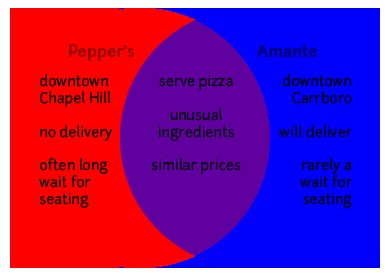Understanding the concept of comparing and contrasting is crucial for effective critical thinking and academic writing. This guide explores the meaning of “compare and contrast,” providing practical strategies for identifying, analyzing, and organizing similarities and differences between various subjects. We’ll delve into recognizing comparison/contrast assignments, generating ideas, developing a strong thesis, and structuring your work for clarity and impact.
Identifying Comparison/Contrast Assignments
While some assignments explicitly state the need for comparison/contrast using keywords like “compare,” “contrast,” “similarities,” and “differences,” others may imply it through subtler phrasing. Look for cues like:
- Direct comparisons: “Compare and contrast the economic policies of two presidential administrations.”
- Implicit comparisons: “Analyze the differing perspectives on climate change presented by two prominent scientists.”
- Evaluative comparisons: “Evaluate the effectiveness of two different marketing strategies for a new product.”
Even when not explicitly required, comparison/contrast techniques can be valuable pre-writing tools for developing arguments and generating insightful analysis.
Generating Similarities and Differences
Effective comparison/contrast requires a systematic approach to identifying similarities and differences. Visual aids like Venn diagrams and charts can be helpful:
- Venn Diagram: Use overlapping circles to represent each subject, listing shared traits in the overlapping section and unique traits in the non-overlapping sections.
- Chart/Table: Create a table with criteria for comparison listed down the left side and subjects across the top. Fill in the corresponding boxes with relevant information.
Consider the specific context of your assignment and course when generating points of comparison. Focus on criteria relevant to the subject matter and the overall learning objectives. For example, comparing historical periods might involve analyzing social structures, economic systems, and political ideologies.
Developing a Strong Thesis Statement
Your thesis statement should clearly articulate the central argument of your comparison/contrast essay. It should move beyond simply stating that similarities and differences exist to offer a more nuanced and insightful claim.
Weak Thesis: “Cats and dogs are similar in some ways but different in others.”
Strong Thesis: “While both cats and dogs offer companionship, their distinct personalities, care requirements, and social behaviors make them suitable for different lifestyles.”
A strong thesis provides direction for your essay and helps the reader understand the significance of your analysis.
Organizing Your Comparison/Contrast Essay
Two common organizational structures for comparison/contrast essays are:
- Subject-by-Subject: Discuss all aspects of the first subject, then all aspects of the second subject. This approach requires a strong thesis and careful integration to avoid a simple listing of traits.
- Point-by-Point: Discuss each point of comparison or contrast in relation to both subjects. This allows for a more direct and focused analysis of specific similarities and differences. This can be done within individual paragraphs or across larger sections of the essay.
Choose the structure that best suits the complexity of your topic and the specific points you want to emphasize. Use clear topic sentences and transitions to guide the reader through your analysis.
Utilizing Cue Words and Transitions
Transition words and phrases help signal your intentions and maintain coherence throughout your essay. Examples include:
- Similarity: similarly, likewise, in the same way, also, moreover
- Difference: conversely, however, on the other hand, in contrast, yet, while, despite
These cues help the reader understand the relationship between your points and follow the logic of your argument.
 Venn Diagram comparing two subjects
Venn Diagram comparing two subjects
By mastering the art of comparing and contrasting, you can unlock deeper understanding, develop critical thinking skills, and produce compelling academic writing. Remember to analyze your assignment carefully, generate meaningful points of comparison, craft a strong thesis, organize your essay effectively, and utilize appropriate transitions to create a clear and impactful piece.
